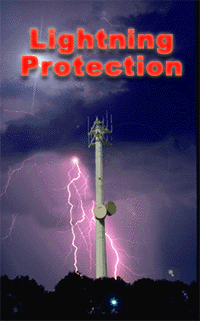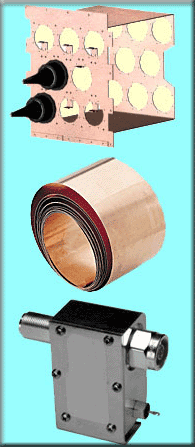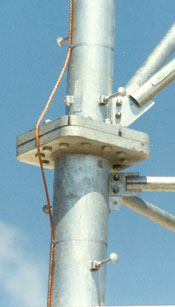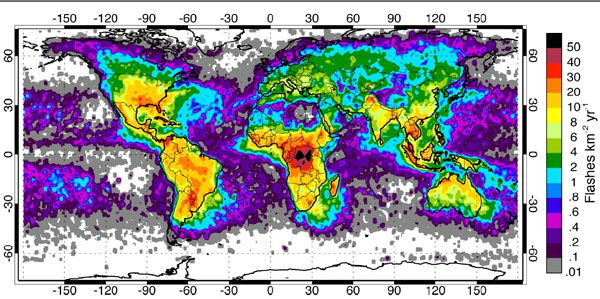
Product Information
Lightning/Surge Protection
Since lightning protection is as much an art as a science, many atmospheric physicists, engineers and lightning experts have divergent points of view.
Although they might embrace different protection philosophies there’s one area that they are all in agreement with: lightning damages tens of millions of dollars worth of communications site equipment each year, yet the resources to prevent much of this loss are not being used. much of this loss are not being used.
In order to provide an appropriate lightning protection system, a communications site must be equipped with two types of defenses, an external protection against a direct impact of a lightning strike and an internal protection against surge voltages produced by lightning strikes in the proximity or on conductors of the electrical network.
A transmission line ground kit is a first line of defense. Bulkhead or flange mounted surge arrestors provide added security by removing transient current that may be induced onto the inner conductor of the coaxial cable before it reaches sensitive radio equipment. The arrestors are available with 7/16 DIN or Type N fittings for easy integration into any transmission line system. Quarterwave shorting stub and gas tube surge products have also proven to be effective.
In addition to a ring ground system, there are many other items that may be specified such as ground buss bars, coaxial protectors and copper bulkheads to name a few. Lightning array dissipation systems are also available as external protection. 
 The following grounding protection materials are budgetary distributor pricing averages. Check with your supplier for pricing for the part number or specification requirements in the RFQ. Pricing does not include taxes, freight and installation. Transmission line ground kits, ground rods and conductors pricing and information is detailed in other informational categories. The following grounding protection materials are budgetary distributor pricing averages. Check with your supplier for pricing for the part number or specification requirements in the RFQ. Pricing does not include taxes, freight and installation. Transmission line ground kits, ground rods and conductors pricing and information is detailed in other informational categories.
|
Ground Protection Products
|
| Description |
Price |
| Ground Bar, Copper, 1/4"x2"x12"- 9 Hole w/mounts, insulators* |
$41.54 |
| Ground Bar, Copper, 1/4"x4"x12"- 24 Hole w/mounts, insulators* |
$53.19 |
| Ground Bar, Copper, 1/4"x4"x24"- 34 Hole w/mounts, insulators* |
$76.14 |
| Coax Surge Protector, Bulkhead Mount 1.5-1000 MHz |
$61.98 |
| Coax Surge Protector, Flange Mount 1.5-1000 MHz |
$56.92 |
| Coax Surge Protector, Bulkhead Mount Combiner 450-512 MHz |
$120.32 |
| Coax Surge Protector, Bulkhead Mount Combiner 800-980 MHz |
$102.86 |
| Coax Surge Protector, Flange Mount Combiner 450-512 MHz |
$120.01 |
| Coax Surge Protector, Flange Mount Combiner 800-980 MHz |
$123.53 |
| 5-Port Modular Earthed Entrance Panel |
$800.00 |
| 8-Port Modular Earthed Entrance Panel |
$952.00 |
| Copper Strap, 1-1/2" Per Ft. |
$0.93 |
| Copper Strap, 3" Per Ft. |
$1.78 |
| Copper Strap, 6" Per Ft. |
$3.71 |
*Ground bar holes and slots are available in multiple configurations by each manufacturer, and typically have a limited impact upon the cost of a 12” or 24” bar.
We recommend that you contact our valued lightning suppression manufacturers and distributors for your site-specific requirements.
Multiple strokes appear as one
What appears as a single lightning strike is actually two or three strokes discharging from the cloud to ground in approximately one-third to one-half second.
A few more lighting particulars:
-
Lightning does strike towers twice, sometimes as much as 2-8 or more times per year. Strike counters are available that allow for local or remote monitoring. They average $85.00.
-
In many cases, lightning seems to flicker. After the initial return stroke, several flashes can occur along the same path. A new dart leader—dimly lit because it's comprised of such little charge—will travel quickly downward through the previously made path toward ground. When it reaches the ground, another return stoke occurs. This may happen several times in a second or two. Between return strokes the lightning path is dark, which makes the lightning appear to flicker. The slower this process happens the more noticeable the flicker will appear.
-
Central Africa has the highest incidence of lighting in the world.
-
Florida has the most strikes in the United Statesbecause the state experiences sea breezes from the east and west coast. The push between these breezes forces ground air up and triggers thunderstorms.
-
Lightning almost never strikes the north or south poles.
Global frequency and distribution of lightning as observed from space by NASA’s Optical Transient Detector
|